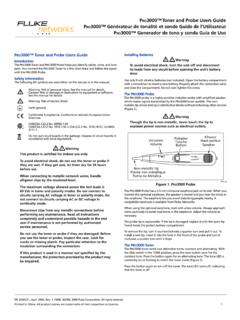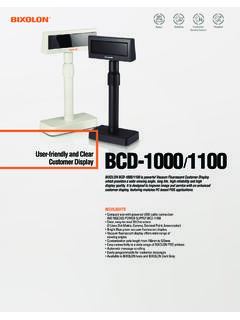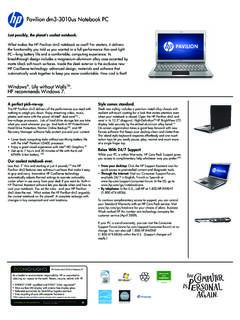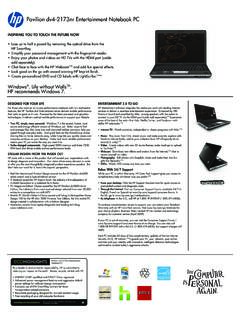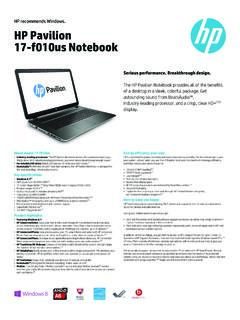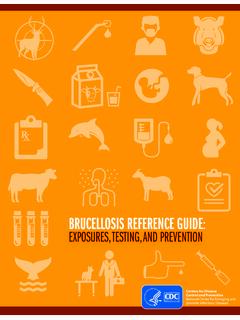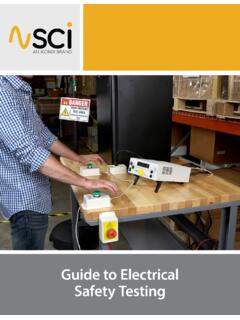Transcription of A Simple Guide to TDS Testing
1 A Simple Guide to TDS Testing Index 1. What is TDS? 2. TDS Levels of water 3. Why is TDS important? 4. TDS and tap water 5. How to test the TDS of tap water 6. How to test bottled water 7. TDS and hydroponics 8. How to test TDS in hydroponics 9. TDS and aquariums 10. Ideal TDS range for aquarium fish, ornamental pond fish and gamefish 11. Testing TDS in aquarium water 12. TDS and pools & spas 13. Testing TDS in pool and spa water 14. How to properly use and care for your TDS meter What is TDS? TDS is short for Total Dissolved Solids. We measure TDS in liquids like drinking water, streams, lakes, pools and spas. TDS is not a pollutant. It is a general indicator of water quality and the level of dissolved substances in water. TDS is measured with a TDS meter. The TDS meter provides a digital readout in PPM, which is parts per million. A TDS reading on 1 ppm is equal to one milligram of dissolved substance in one liter of liquid.
2 Ultra-pure water, containing no dissolved minerals, has a TDS of ppm. Natural sea water, high in dissolved salts, has over 10,000 ppm TDS! Take a look at this chart illustrating the TDS levels of different kinds of water sources. TDS Levels in Water Distilled water Amazon River 6 Rain water 15 Tap water 20-300 Rio Grande River 600 Seawater 10,000 Why is TDS important? TDS is not a measure of harmful substances or pollutants. TDS is simply a measure of all substances dissolved in water. Purified water has a TDS of ppm. The ocean has a TDS of 10,000 ppm. Neither water sources are harmful. TDS is a good tool for monitoring the general water quality of a known source of water. Here is a perfect example! If you tested the TDS of distilled water and found it was 300 ppm, you would know the water was not distilled. Perhaps the water purification system was faulty or something had contaminated the distilled water.
3 TDS Testing is like a watch dog. It will tell you if things are not as they should be. Let s take a look at all the ways you can use a TDS meter to check on water quality. TDS and tap water Tap water contains a variety of minerals and salts like calcium, magnesium, chloride and potassium. The more minerals and salts in the water, the higher the TDS. The United States Environmental Protection Agency sets the standards for drinking water in the US. The maximum TDS in drinking water is 500 ppm. A high TDS usually indicates the water source contains a high level of calcium and magnesium (hard water) and other salts. This water is probably corrosive to plumbing fixtures, pipes and appliances. The water may taste bad too, due to the high mineral content. A professional water treatment company will be able to advise you on specific actions to take to correct the situation.
4 How to test the TDS of tap water If Testing tap water, turn on the cold water and let it run for about one minute. Take a water sample in a clean plastic or glass container. Make sure that the container is clean and free of any substance that could affect TDS. Place the TDS meter in the sample and wait for the reading to stabilize. Rinse the TDS meter with distilled water after each use. How to test bottled water Bottled water is a generic term with no distinct meaning other than it is water in a container. Spring water, distilled water, filtered water and purified water do, however, have distinct legal definitions. Testing the TDS of bottled water is similar to Testing tap water. Pour a sample in a clean container. Place the TDS meter in the water and wait for the reading to stabilize. Distilled water contains no minerals and will have a very low TDS. In normal practice the TDS of pure water is around Spring water, purified water and filtered water, on the other hand, may contains a lot of minerals and salts which affect the TDS.
5 It is not unusual for bottled water have a TDS of 100 ppm or higher. Be sure to thoroughly rinse the TDS probe after each use. TDS and hydroponics Hydroponic growing is more popular than ever. Since the plants are growing in a nutrient solution, TDS is an indicator if the nutrient solution needs to be adjusted. If the TDS creeps out of range, it indicates the nutrients are out of balance. The recommended TDS range is dependent of the type of plant being grown. Monitoring the TDS is essential in order to have a successful hydroponic garden or growing operation. How to test TDS in hydroponics It is best to test the TDS in an area of the hydroponic system that has moving water. Place the TDS meter into the agitated nutrient solution and wait for the reading to stabilize. Rinse the probe end of the meter with distilled water after each use. TDS and aquariums Aquarium hobbyists keep and breed hundreds of kinds of tropical fish in their aquariums.
6 Some aquarists specialize on South American river fish and plants that thrive in soft water containing almost no minerals (Low TDS). Others keep African lake fish that live in high TDS water containing a high level of calcium, sodium and chloride. Whether you are keeping a Simple tank of tropical fish or a specialized aquarium, monitoring the TDS is an important part of aquarium maintenance. TDS measurement will indicate if the minerals, salts and other compounds are building up over time. If the TDS climbs above normal levels, a water change is required. Testing the TDS each week will show if the water quality is stable or declining. Ideal TDS range for aquarium fish and ornamental pond fish 350-400 ppm African lake cichlids 200-500 ppm Goldfish, Japanese koi 100-300 ppm Guppies, Swordtails, Mollies, Barbs, Platies 10-100 ppm Angelfish, Discus, Neon tetras Testing TDS in aquarium water Testing the TDS in an aquarium is easy with a TDS meter.
7 Simply place the meter into the aquarium, preferably near flowing water. Hold the TDS meter until the reading stabilizes. Thoroughly rinse the meter after each use. Aquarium water contains salts, algae and other microbes that must be rinsed from the probe after each use. TDS and pools & spas The ideal TDS level in pools and spas is an area of debate. Most experts agree that the maximum TDS of a freshwater pool or spa should be no higher than 1,500 ppm. As pool chemicals are added the TDS can climb closer to 3,000 ppm. Saltwater pools that use a salt generator normally have a TDS level of 3,500 ppm up to 5,000 ppm. TDS measurement is helpful for detecting a trend of increasing TDS, which indicates a build-up of minerals or pollutants in the water. Testing TDS in pool and spa water Testing the TDS in swimming pools and spas is easy. Simply place the meter into the water, preferably near flowing water.
8 Hold the meter until the TDS reading stabilizes. Thoroughly rinse the meter after each use. The water contains disinfectants and body oils that must be rinsed from the probe after each use. How to properly use and care for your TDS meter Your hand-held TDS meter uses the same technology as expensive laboratory TDS meters. Even though it is protected in a rugged plastic case your TDS meter still needs to be cared for just like the expensive laboratory models. Follow these Simple tips and your TDS meter will last for many years and always provide accurate results. 1. Your TDS meter needs to be calibrated periodically to remain accurate. The calibration process involves dipping the TDS meter into a calibration solution. This solution is formulated to a specific TDS range. The calibration process provides the TDS meter with an accurate reference point. In other words, the meter learns how to interpret a wide range of TDS level based on the reference level it learned during the calibration process.
9 All TDS meters forget their reference levels and need to be recalibrated periodically. If the meter is not calibrated occasionally it will still provide a TDS reading but it probably won t be as accurate. 2. Treat your TDS meter gently. The probe is made of glass and can be damaged if it comes into contact with hard objects. 3. Never dip the meter into substances that can coat and damage the probe. Paint, glue and other sticky substances can damage the probe. 4. Never dip the TDS meter into boiling liquids. It will damage the probe. 5. When you are finished using your TDS meter, rinse the probe with water, preferably distilled water. The idea is to flush away any contaminants on the glass probe. Never scrub the probe with a brush or towel.
